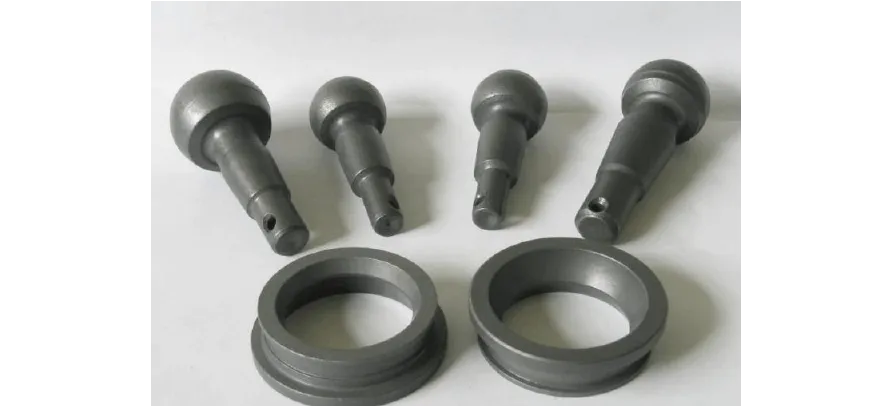Понимание фосфатирования металла: процесс, методы и применение
Введение
Изучите сложный химический процесс фосфатирования металла, его цель в повышении коррозионной стойкости и его разнообразные применения в различных отраслях промышленности.
Что такое фосфатирование металлов?
Фосфатирование включает химические и электрохимические реакции с образованием мембраны химического превращения фосфата на металлических поверхностях. Этот защитный слой, известный как фосфатирующая пленка, защищает металлические поверхности от коррозии и улучшает адгезию при использовании в качестве грунтовки для краски или других покрытий.
Назначение фосфоризации металла
Основной целью фосфоризации металлов является повышение коррозионной и износостойкости. При погружении металлов в раствор, содержащий фосфат и нитрид, образуется коррозионностойкий слой. Этот процесс применим к различным металлам, таким как железо, сталь и алюминий, при этом толщина слоя регулируется определенными параметрами.
Способы фосфатирования металлов
Маринование
- Кислотный фосфат используется для создания более толстых защитных слоев, идеально подходящих для тяжелых условий эксплуатации.
Щелочная Промывка
- Щелочной фосфат образует более тонкие слои, подходящие для более легких применений.
Инновационные технологии
- Методы фосфатирования без хрома и нанесения ионных покрытий обеспечивают экологические преимущества за счет сокращения использования вредных химических веществ.
Этапы предварительной обработки, включая удаление масла и ржавчины, имеют решающее значение для обеспечения оптимальных результатов. Поддержание строгого контроля над такими параметрами, как температура и pH, во время процесса обеспечивает качество фосфоризирующей пленки.
Применение фосфоризации металлов
Фосфатирование металлов находит широкое применение в таких отраслях промышленности, как:
Автомобилестроение
- Повышение долговечности и коррозионной стойкости компонентов автомобиля.
Электроника
- Обеспечивает гладкую, устойчивую к коррозии поверхность электронных деталей.
Военные
- Защита военной техники от суровых условий окружающей среды.
Здания и сооружения
- Увеличение срока службы металлических компонентов конструкций.
Механическое производство
- Обеспечение устойчивости механических деталей к износу и коррозии.
Преимущества и недостатки фосфатирования металлов
Преимущества:
- Повышенная коррозионная стойкость.
- Простой и эффективный процесс.
- Совместимость с другими видами обработки, такими как покраска, нанесение покрытий и гальванопокрытие.
- Может выполняться при комнатной температуре, что позволяет экономить энергозатраты.
Недостатки:
- Потенциальное воздействие на окружающую среду в результате использования химических веществ.
- Шероховатая поверхность может потребовать дополнительной обработки для придания гладкости.
- Приглушенный цвет и глянцевая отделка.
- Требует строгого контроля параметров жидкости для поддержания качества.
Заключение
Фосфоризация металлов - универсальный и эффективный процесс повышения долговечности и коррозионной стойкости различных металлических подложек. Понимая его методы, области применения и преимущества, промышленные предприятия могут использовать этот процесс для достижения превосходных результатов при обработке металлов.
ЧАСТО ЗАДАВАЕМЫЕ ВОПРОСЫ
Какие металлы можно обработать фосфоризацией?
- Фосфатирование можно наносить на железо, сталь, алюминий и другие металлы для повышения их коррозионной стойкости.
Существуют ли экологически чистые методы фосфоризации?
- Да, инновационные технологии, такие как фосфатирование без содержания хрома и ионное покрытие, разработаны для повышения экологичности.
Почему предварительная обработка важна при фосфоризации?
- Предварительная обработка, такая как удаление масла и ржавчины, гарантирует, что металлическая поверхность будет чистой и готовой к процессу фосфатирования, что приводит к лучшей адгезии и эффективности фосфатного слоя.
Можно ли сочетать фосфатирование с другими видами обработки?
- Безусловно, фосфатирование часто используется в качестве грунтовки для покраски, нанесения покрытий или гальванопокрытия для повышения общей долговечности и внешнего вида металла.

